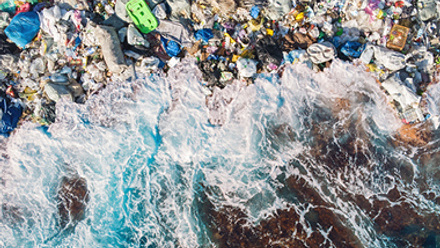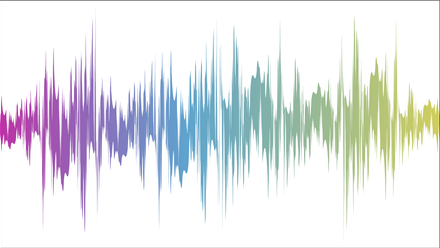Legacy, Emerging and Novel Per- and Polyfluoroalkyl Substances (PFAS): Latest Findings and Future Research Needs
Ian T. Cousins, Stockholm University; Zhanyun Wang, Empa Materials, Science and Technology; Yue Ge, U.S. Environmental Protection Agency; Hitoshi Iwahashi, Gifu University
Over the past two decades, the class of per- and polyfluoroalkyl substances (PFAS) has emerged as global contaminants of high public concern due to increasing recognition of their high persistence and other hazardous properties (e.g., bioaccumulation potential, toxicity, and/or global warming effects). Numerous studies and control actions have been and are being made to understand and reduce the environmental and human exposure to many legacy PFAS, particularly long-chain perfluoroalkyl acids (PFAA) and related substances (i.e., “precursors”). The ongoing phase-out of long-chain PFAA and related substances marks an important step towards solving the global environmental concerns related to this substance class. Meanwhile, more concerted efforts are still needed on the wide class of PFAS. First, continuous efforts are needed to monitor overlooked sources and reservoirs of legacy PFAS in the environment, and to develop suitable technologies to treat them in a cost-efficient manner. Second, more efforts are needed to develop novel analytical methods to uncover emerging and novel PFAS in use, including byproducts and impurities, and to identify strategies for risk management actions in a timely manner. There is a high demand for robust, rapid, cost-effective and efficient analytical methods for onsite detection and measurement of PFAS in a variety of environment matrices.
This session aimed to provide a platform for international experts from academia, industry, government and civil society to share recent and ongoing progress in their work on the various aspects of research into PFAS. This substance class is particularly high on the political agenda in Europe this year considering that the European Chemicals Agency (ECHA) submitted a proposed PFAS restriction of approximately 10,000 individual substances on 7 February. The proposal is currently under consultation until 25 September.
Presented Works
Sixteen platform presentations, three poster spotlight presentations, six poster corner presentations and 48 posters were presented during the session. Given that there was so much material presented in this session, it is only possible to describe a few highlights from the platform presentations in this short summary.
In the full-day platform session, Kelsey Ng from RECETOX, Masaryk University, kindly stepped in at the last minute to kick off the session and present his research on target and suspect screening of 4,777 PFAS in river water, wastewater, groundwater and biota samples in the Danube River Basin. A total of 72 PFAS were revealed by suspect screening and 18 of these were prioritized for future monitoring. We then heard from Viktória Licul-Kucera of Hochschule Fresenius, about attempts to design novel biodegradable PFAS. These novel fluorinated surfactants were shown to biodegrade rapidly; however, full mineralization was not achievable with some persistent transformation products being formed (i.e., short-chain perfluoroalkyl acids). Derek Muensterman, from the University of Oregon, showed how protein-water and membrane-water partition coefficients can be measured for target and suspect PFAS, which provides essential inputs for bioaccumulation modeling of PFAS. Kim Fernie, from Environment and Climate Change Canada, presented on the flow of PFAS in the aquatic-terrestrial food web of tree swallows. A combination of analytical and modeling approaches was used to estimate bioaccumulation of target PFAS in this complex food web. Tree swallows were shown to take up PFAS through the diet via both terrestrial and aquatic pathways. Ge Xie, from the Vrije University, demonstrated that multigenerational toxicity of PFAS can occur in Daphnia magna and Folsomia candida. It was concluded that conventional single-generation toxicity tests will underestimate the long-term toxicity of PFAS, which is particularly concerning considering the extreme persistence of these substances.
Given that there are many thousands of PFAS in use, novel non-target analytical approaches such as the ones presented in the platform presentation by James McCord, of the US EPA, are currently being researched widely around the world. The US EPA has led the innovation in these non-target analytical approaches in recent years in particular identifying thousands of unregulated PFAS emitted from fluoropolymer manufacturing. Melania Lauria, from Stockholm University, presented her attempts to close the organofluorine mass balance in marine mammals using both suspect screening and machine learning-based semi quantification. Lara Cioni, from the Norwegian Institute for Air Research, then continued the theme of organofluorine mass balances. Her research was instead focused on performing a mass balance in pooled serum samples from northern Norwegian men and women. She used targeted analysis of PFAS, extractable organic fluorine analysis and the total oxidizable precursor (TOP) assay to perform this mass balance. To end the morning talks, Oddný Ragnarsdóttir, from the University of Birmingham, presented her experimental studies on assessing the dermal bioaccessibility of PFAS in contact with skin via house dust and applied cosmetics. This added to growing evidence that dermal intake of PFAS is indeed possible and worthy of further investigation.
In the afternoon session, Bo Sha, from Stockholm University, presented field evidence for the transport of PFAS on sea spray aerosols (SSA), which are particles ejected from the world’s oceans. According to this research, remobilization of PFAS on SSA is a major source of PFAS to the atmosphere. Anna Robuck, from the US EPA, then presented more evidence that fluoropolymer manufacturing plants are emitting large quantities of understudied PFAS into the environment. Robuck also showed how these PFAS are bioaccumulating in food chains near plants located in Italy and the US. Erlend Sørmo, from the Norwegian Geotechnical Institute, then provided convincing evidence that dry pyrolysis is an effective way of removing PFAS from sewage sludge and other types of solid waste fractions. The biochar that is generated from pyrolysis is free of PFAS and can be used, for example, for energy production or agriculture. Mohammed Sadia, from the University of Amsterdam, explained how a drinking water aquifer was contaminated by legacy PFAS contamination from suspected point sources. PFAS fingerprinting methods were used to confirm that the landfill and military camp were the sources of the PFAS contamination. Núria Trilla, from the Spanish Research Council (CSIC), Institute of Environmental Assessment and Water Research (IDAEA), kindly stepped in to conclude the session and present new data on PFASs in Atlantic Ocean and the Southern Ocean. Interestingly, concentrations of PFASs in surface waters were up to 516 pg/L in the Southern Ocean despite there being no manufacturing sources of PFASs in the southern hemisphere.
Unfortunately, we cannot highlight all of the other great science that was presented in the 48 posters in our session. We are committed to continue submitting session proposals to provide a forum to discuss the huge body of research into PFAS, as long as this continues to be a hot topic. We therefore look forward to continuing the scientific discussions in Seville next year.
Author’s contact: Ian Cousins, [email protected]




